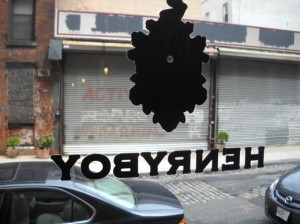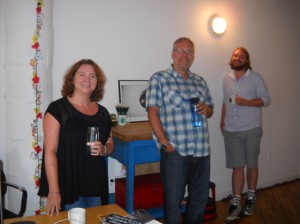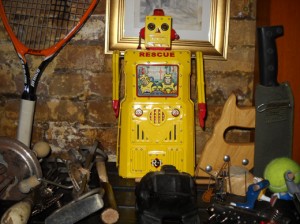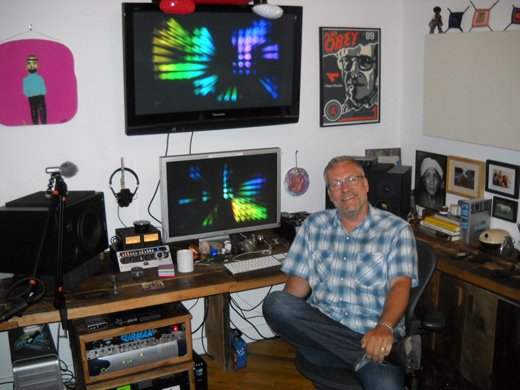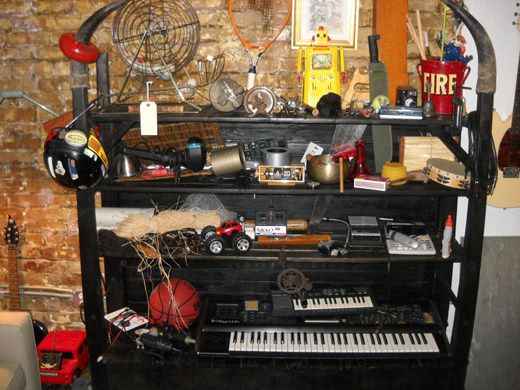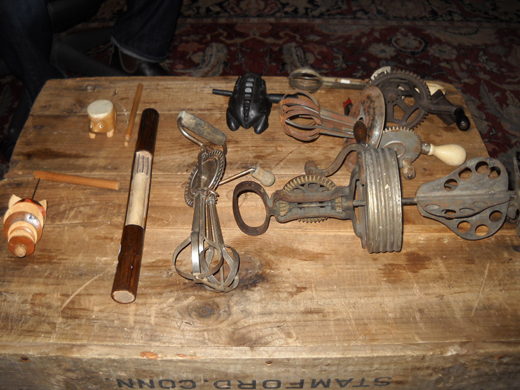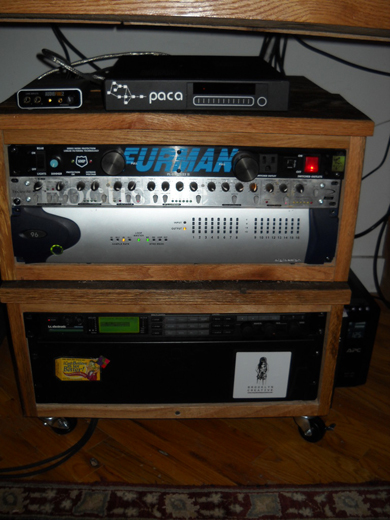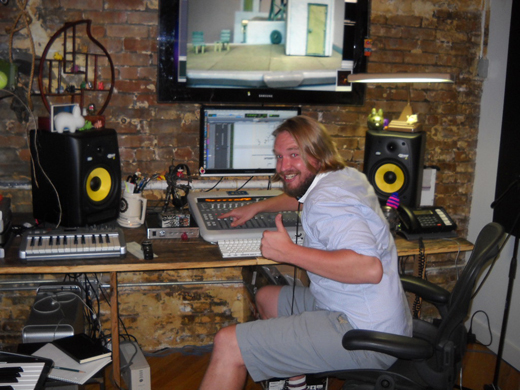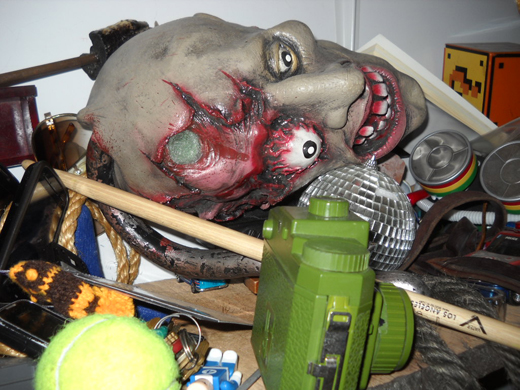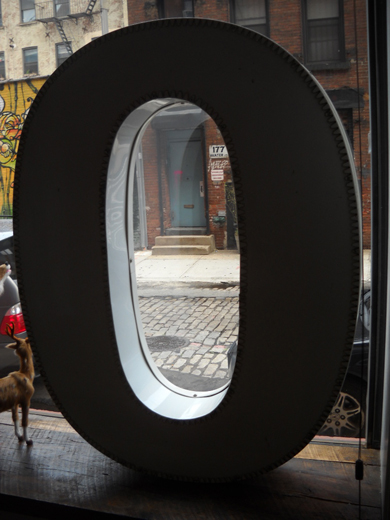Henryboy: How Super Sound Designer Bill Chesley Got Ahead by Going Solo
DUMBO, BROOKLYN:A Swedish family spelunks happily along the DUMBO waterfront, in search of the perfect hat to supplement their Saab back home. As they round the corner on Water Street, a storefront bearing the mysterious name “Henryboy” cheerily beckons. Could this be the haberdashery of their dreams? They pull on the unlocked door, and step inside…
But our intrepid shoppers will be disappointed. Foley, not a fedora, is the specialty of the house here. Sven and his brood move on to the next boutique – and leave one of New York City’s most respected sound designers to return to his daring pursuits.
The chief proprietor of Henryboy is Bill Chesley, who had the confidence – and the courage – to open one of the few practices in the Northeast that is fully focused on high-level sound design. If it’s original music, audio post mixing, or VO recording you seek, you must look elsewhere.
But if you want to work with a proven master of the sonic X-element for advertising and long-form, Henryboy will be the perfect place for you – as it’s proven to be for world-class brands like State Farm, Hulu, the NFL, Cisco, Doritos, Nike, Coca Cola, AT&T, Levi’s, Chevy, Cheetos, Guinness, and many more.
Although Chesley and his Henryboy colleagues – sound designer Matt Hedge and producer/partner Kate Gibson – are intensely passionate about their work, they’ll also admit that theirs is a particularly tricky field to explain.
“The way we maintain our presence in this competitive industry is by being problem solvers – right?” says the affable Chesley to Gibson. “I think we see things differently, and as a result we give people things they hadn’t thought of. You often have to execute your clients’ vision, without them knowing what it is that they want.
“It’s like we say on our Website: Talking about sound design is like dancing about fish. It’s very hard to describe. Our job is to take abstract ideas and turn them into sounds.”
Sound Design Defined
According to Chesley, successful sound design for advertising starts with an understanding of the product, the ad agency creatives, the demographic that they’re attempting to reach, and the message that the spot is attempting to get across.
“It’s easy to make it sound cool,” he points out, “but is the sound design working in the context of what we’re trying to accomplish? Is it satisfying not just to us in our job, but also in the spot? It’s a balancing act, because clients want to be blown away, but then you may have to temper that with restraint.”
Asked to provide his personal definition of sound design, Chesley references the promotional matchbooks that Henryboy keeps by the door (which also make a handy compensatory handout to the hopeful drop-in shoppers that they regularly attract). “On our matches, it says, ‘We make sounds for things that don’t have a sound, and make things that have a sound, sound better.’ Whether it’s with Foley, or character voices, or plugins like Filterbank, we have to constantly come up with things that don’t exist.”
Henryboy — which has built up a deep and dedicated following of top-tier agency clients over the years — often get called in on a spot after the initial soundtrack has been laid in, yet the campaign creatives have the sense that something is missing.
“People call us and say, ‘How do we bring some life to this?’” Chesley explains. “All due respect to video editors and their procedures of putting in temp sound effects, but the difference after we’ve replaced those sounds is often night and day – we take it to another level.
“Why is that? It’s because a lot of the temp stuff that we get sounds flat. We understand how to create new sounds, as well as use EQs, filters, and our arsenal of other plugins and processors to provide dimensionality. So the way to explain it is that we bring life to things, by using the tools at our disposal, and our experience. Music makes the spot sound good, VO sells the product, but then there’s another element that you can’t quantify – that’s where sound design comes in.”
On any given assignment, Chesley and Hedge may put their mouths on a mic to make twisted new textures, turn to their extensive Foley toyboxes, head out into the field to record organic sources and ambiences, or go in the box with GRM Tools or Kyma to manipulate their three terabyte (and growing) library of existing sounds. But Chesley points out that there’s a crucial, additional element to the art of sound design besides the imaginative new noises one can come up with.
“If you go through our reel, you’ll see it’s not about how much sound design you do – it’s about finding the right place for it,” he points out. “That can be a very finite thing. That’s where sound design becomes a very difficult thing to describe. Because sometimes it’s not about the quality of the dog bark, it’s where you put it.
“As a sound designer, you have to see the opportunity that lies between the underbelly and the obvious. There’ll be things that are very apparent in the context of a narrative, but you can add something beneath it and recontextualize it. It’s easy to make an insane sound nowadays, but can you make it work within a context? That’s a complicated process. And of course, some of the best sound design is the stuff that you don’t realize is happening — which is a very sophisticated thing to pull off.”
A State of Validation
Chesley’s award-winning career began in the mid-‘90’s, when he was an engineer and sound designer for West Village production company GLC, cranking out films for NYU and Columbia grad students, and animation projects for MTV’s “Liquid Television”.
A three-year stint at Machine Head was then followed by 12 fruitful years with Michelle Curran’s TriBeCa-based Amber Music. Then Chesley and Gibson had an epiphany in 2008: damn the torpedoes, and open up a facility dedicated solely to sound design.
Four years later, the gamble has paid off. 2012 has provided them with a steadily growing portfolio of projects, and also saw the shop awarded its first Gold Clio award, for their absolutely hair-raising work on the trailer for the video game Prey 2. Additionally, long-form documentary work – traditionally not a field strongly associated with sound design – has been arriving via clients like noted director Alex Gibney.
The growth of Henryboy provides solid evidence of something that Bill Chesley had long suspected and was determined to prove: that sound – often underrated and last in line in advertising’s frantic production process – is essential to the success of the final spot.
“I’ve always had a romantic preoccupation that sound was more important than people gave it credit for,” he says. “I felt for a long time that if I had the opportunity to do a sound design-only shop, that I would do that. And the proof is in the pudding: We have a lot of clients who have stayed loyal to us over the years. I believe we bring something to the table, and they must agree – why else would they call us? They don’t have time to mess around.”
— David Weiss
Following, find six of Henryboy’s favorite projects accompanied by commentary from Bill Chesley, followed by a photo gallery from inside HenryBoy.
Prey 2, Trailer
“Clio gold for this mind-blowingly complicated little alien invasion. Pick your moments, pick your frequencies, what’s the thing your eye goes to first? Make that thing the loudest!”
Amdro, “Death Note”
“Rob Zombie directed this little dreamboat of a sound design gig, so I knew I could push the boat out. Lots of processed insect sounds and foleyed metal scrapes, some GRM delay, and voila! Crazy time!”
State Farm, “State of Chaos”
“This was tough because I had the War of the Worlds creature horn thing to emulate. I pitched down a door squeak, added a bit of beef. I think it’s pretty good.”
Nike Brand Jordan “Engine”
“Establish the metaphor, find the rhythm, keep it in sync, and make it build — oh, and make sure it sounds cool as shit. No problem.”
AT&T, “Spider”
“Methinks this is a good example of Foley that really clicks. I replaced almost every non-voice sound in that bad boy — and it’s pretty heightened, and the heightening isn’t a distraction or even noticeable.”
Coca-Cola “Happiness Factory”
“This one almost went sound design-only. There’s loads of detail in there that gets a bit lost in the score — that’s showbiz.”
***
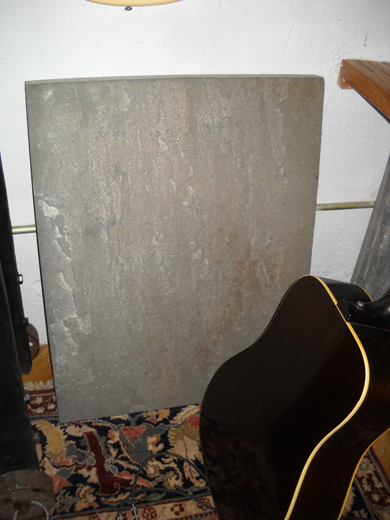
"Never understimate the power of a slab" -- for footsteps, a quarter falling on the street, and much more.
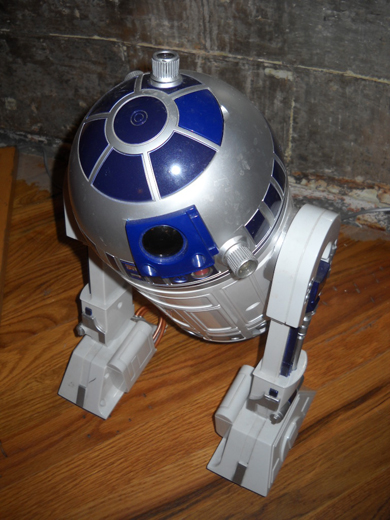
Ideas a la R2D2: According to Chesley, visual inspiration is an essential component in the sound designer's environment.







